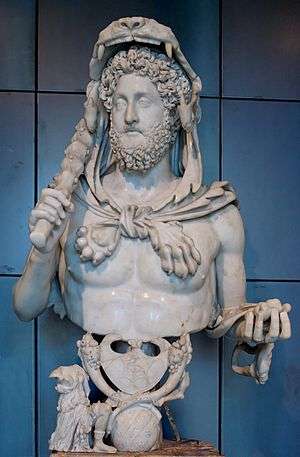180
This article is about the year 180. For other uses, see 180 (disambiguation).
| Millennium: | 1st millennium |
|---|---|
| Centuries: | 1st century · 2nd century · 3rd century |
| Decades: | 150s · 160s · 170s · 180s · 190s · 200s · 210s |
| Years: | 177 · 178 · 179 · 180 · 181 · 182 · 183 |
| 180 by topic | |
| Politics | |
| State leaders – Sovereign states | |
| Birth and death categories | |
| Births – Deaths | |
| Establishment and disestablishment categories | |
| Establishments – Disestablishments | |
| Gregorian calendar | 180 CLXXX |
| Ab urbe condita | 933 |
| Assyrian calendar | 4930 |
| Bengali calendar | −413 |
| Berber calendar | 1130 |
| Buddhist calendar | 724 |
| Burmese calendar | −458 |
| Byzantine calendar | 5688–5689 |
| Chinese calendar | 己未年 (Earth Goat) 2876 or 2816 — to — 庚申年 (Metal Monkey) 2877 or 2817 |
| Coptic calendar | −104 – −103 |
| Discordian calendar | 1346 |
| Ethiopian calendar | 172–173 |
| Hebrew calendar | 3940–3941 |
| Hindu calendars | |
| - Vikram Samvat | 236–237 |
| - Shaka Samvat | 101–102 |
| - Kali Yuga | 3280–3281 |
| Holocene calendar | 10180 |
| Iranian calendar | 442 BP – 441 BP |
| Islamic calendar | 456 BH – 455 BH |
| Javanese calendar | 56–57 |
| Julian calendar | 180 CLXXX |
| Korean calendar | 2513 |
| Minguo calendar | 1732 before ROC 民前1732年 |
| Nanakshahi calendar | −1288 |
| Seleucid era | 491/492 AG |
| Thai solar calendar | 722–723 |
| Wikimedia Commons has media related to 180. |
Year 180 (CLXXX) was a leap year starting on Friday (link will display the full calendar) of the Julian calendar. At the time, it was known as the Year of the Consulship of Rusticus and Condianus (or, less frequently, year 933 Ab urbe condita). The denomination 180 for this year has been used since the early medieval period, when the Anno Domini calendar era became the prevalent method in Europe for naming years.
Events
By place
Roman Empire
- The Quadi are chased westwards, deeper into Germania. The Praetorian prefect, Tarutenius Paternus, achieves a decisive victory against the Germanic tribes.
- March 17 – Emperor Marcus Aurelius dies after a week's illness at his camp in Vindobona (modern Vienna). He is succeeded by his son Commodus (age 18).
- The Era of the Five Good Emperors ends.
- Rome creates a 4-mile wide buffer zone by the Danube.
- Work begins in Rome on the building of the Column of Marcus Aurelius.
- 180–395 – Late Empire in Rome.
- Porta Nigra is built in Augusta Treverorum (modern Trier).
- Northern Brits from beyond Hadrian's Wall invade the North of modern-day England causing Emperor Commodus to allow swathes of Northern cities to establish city walls.
Europe
Oceania
- Lake Taupo erupts, forming ash clouds as far as China and Europe.
By topic
Arts and sciences
- In his Methodus Medendo, Greek physician Galen describes the connection between paralysis and the severing of the spinal cord.
- Galen's popular work on hygiene is published.
Religion
- July 17 – Twelve Christian inhabitants of Scillium in Numidia are executed in Carthage (also in North Africa) (known as the Scillitan Martyrs) – they had refused to swear an oath to the Emperor.
- Commodus creates an official cult of the Zoroastrian god Mithra.
Births
- Ardashir I, founder of the Sasanian Empire (d. 242)
- Sima Fu, younger brother of Sima Yi (d. 272)
- Julia Soaemias, mother of emperor Elagabalus (d. 222)
Deaths
- March 17 – Marcus Aurelius, Roman Emperor (b. 121)
- Aulus Gellius, Latin author and grammarian (approximate date) (b. c. 125 AD)
- Gaius, Roman jurist (approximate date)
- Lucian (approximate date) (b. c. 125 AD)
- Maximilla, early Montanist
- Melito of Sardis, bishop of Sardis
- St. Miggin (martyred in Numidia)
- St. Namphamo and consorts (martyred)
- St. Symphorian (martyred)
References
This article is issued from Wikipedia - version of the 9/28/2016. The text is available under the Creative Commons Attribution/Share Alike but additional terms may apply for the media files.
